
Transform Your Supply Chain Planning and Marketing Strategies with Google Cloud and SAP Integration

Transform Your Supply Chain Planning and Marketing Strategies with Google Cloud and SAP Integration
November 17, 2022 | Premangsu Bhattacharya
Blog / Digital Transformation in the Oil and Gas Industry
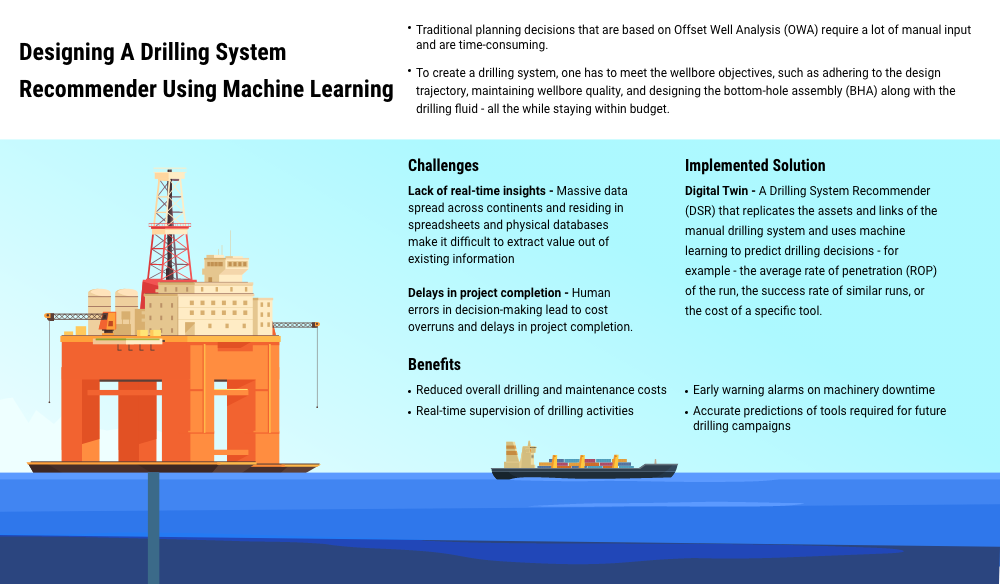
For any drilling campaign to be successful, the planner has to wear multiple hats. From coordinating the drilling process and solving critical technical problems to ensuring cost-effectiveness, the planner makes high-level decisions based on available information. But here is the challenge – in many companies, even today, most of this information resides in designated filing cabinets or spreadsheets, blocking planners from accessing the insights they need to plan future drilling campaigns.
Planning decisions are traditionally made based on Offset Well Analysis (OWA). OWA is the process of analyzing historical drilling performance from neighboring wells to plan an upcoming drilling campaign. Conducting an OWA has its challenges primarily because it requires a lot of manual input and is time-consuming. Sometimes, there is no single source of truth, and the only way a planner can extract information is by collecting past experiences shared by the engineering team. Adding to the complexity is scattered data across spreadsheets and physical databases, guzzling away time and making it laborious for the planner to get the information in one place.
To create a well-functioning drilling system, one has to meet the wellbore objectives, such as adhering to the design trajectory, maintaining wellbore quality, and designing the bottom-hole assembly (BHA) along with the drilling fluid – all the while staying within budget.
When there are so many moving parts involved in the project, decision-making is complex. Drilling engineers at one of the world’s largest offshore drilling companies who relied primarily on available offset well data, prior experience, physical modeling, and advice from service companies understood the need for a data-driven decision-making system. They were eager to take the guesswork out of planning decisions and improve the efficiency of the well construction process.
The offshore drilling company and Pluto7, along with Google, formed an interdisciplinary team of data scientists, software engineers, and domain experts to create a roadmap for learning, processing, executing, and creating a repeatable model for success. While the global offshore drilling compnay brought in domain expertise, Pluto7’s deep expertise in data science and machine learning helped create a feedback-based recommender system.
A recommender system is a popular AI tool used in many consumer applications. Think of Netflix or Youtube – a recommender system is a tool that tells a viewer what to watch next. The recommender system scans information from huge data sets and makes relevant suggestions based on user choices. The one key difference, however, is that instead of user choices, the Drilling System Recommender (DSR) we designed relies on historical performances and other KPIs. The KPIs allow the recommender to suggest what is ultimately important to the success of the drilling campaign – for example, the average rate of penetration (ROP) of the run, the success rate of similar runs, or the cost of a specific tool. The KPIs are flexible, enabling users to finetune the importance of each KPI and modify them based on their preferences.
We initially developed two proof-of-concept engines – one for PDC drill bit design and another for the motor power section. After the successful pilots, the drilling company approached us to add more capabilities to the system – such as additional engines for the BHA type, drilling fluid, and a web application for end users.
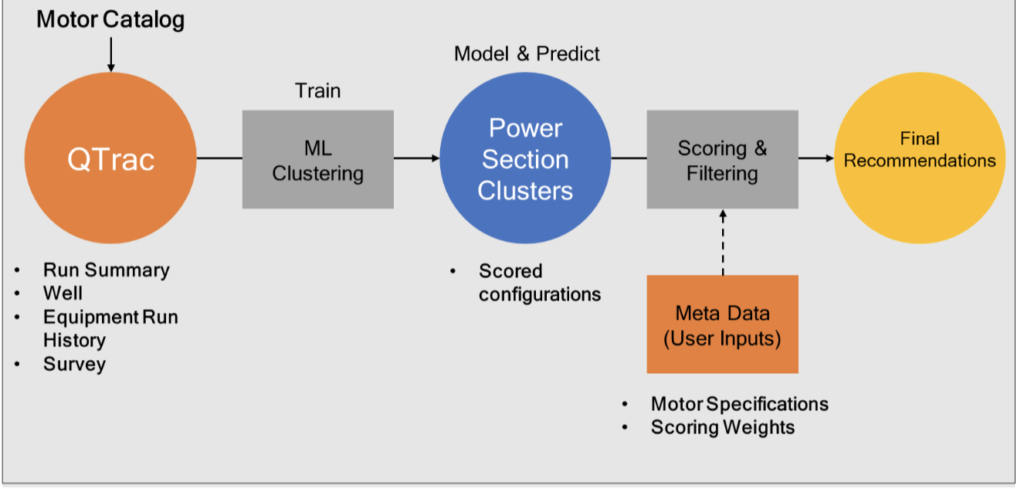
Motor Power Section Recommender architecture
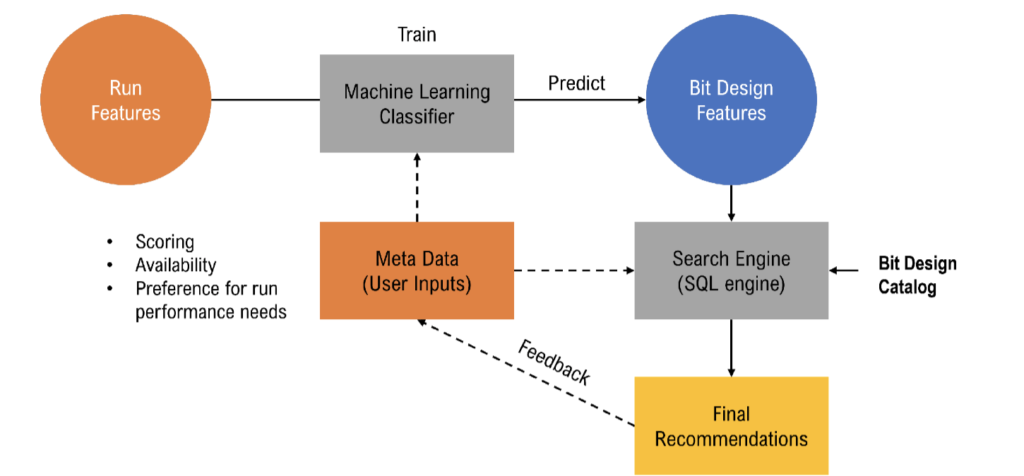
Drill Bill Recommender engine architecture
The offshore drilling company generates tons of operational data, most of which at that point used to reside in legacy databases. These databases included
The first task was moving the data to a secure cloud environment, conforming to strict data residency and rights-of-use rules. Putting the data in the cloud allowed us to use the full capabilities of data science applications at scale.
We used a multi-dimensional distance algorithm for the recommender engines to measure the similarity of the planned run or interval to that of the offset run or intervals.
For the BHA and motor power section, we clustered the offset runs with the help of an unsupervised ML approach. Then, we used the multi-dimensional distance algorithm to determine the most similar runs within the planned run’s predicted cluster.
The bit design recommender, however, uses a supervised ML approach mainly due to the availability of many existing bit designs within the client’s database. Also, since a high volume of new bit designs is introduced in the company frequently, they wanted their users to have the flexibility to choose between field-tested and new bit designs, per their requirements.
In the pilot dataset, the ML engines exactly predict all the four bit design features for 52% of the validation runs and at least three or more bit design features for 80% of the validation runs. Following the success of the POCs, we prepared a larger dataset containing approximately 58,000 drill bit runs. Using a more varied data set, we could help the client improve the overall accuracy of the ML models to up to 82%.
Data storytelling is as important as the system’s ability to perform complex actions. The entire effort falls flat if the end user cannot make sense of the data. Keeping in mind the sensibilities of the engineers at the drilling company, we created simple visualizations that can effectively communicate the key messages about any particular drill operation.
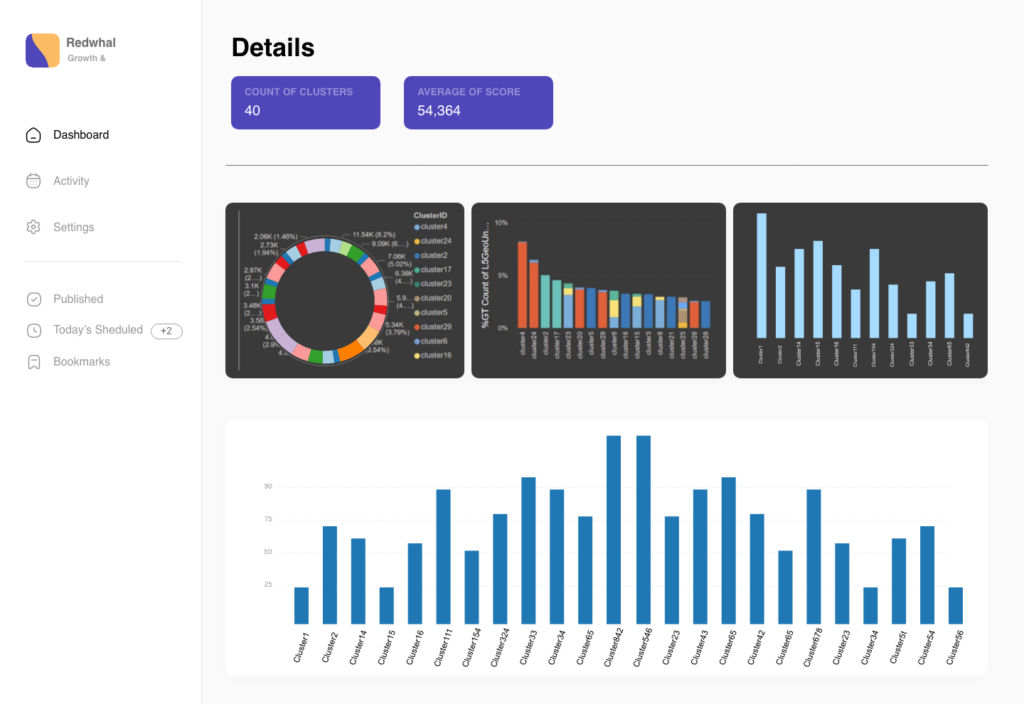
A visual representation of the predicted bit design features
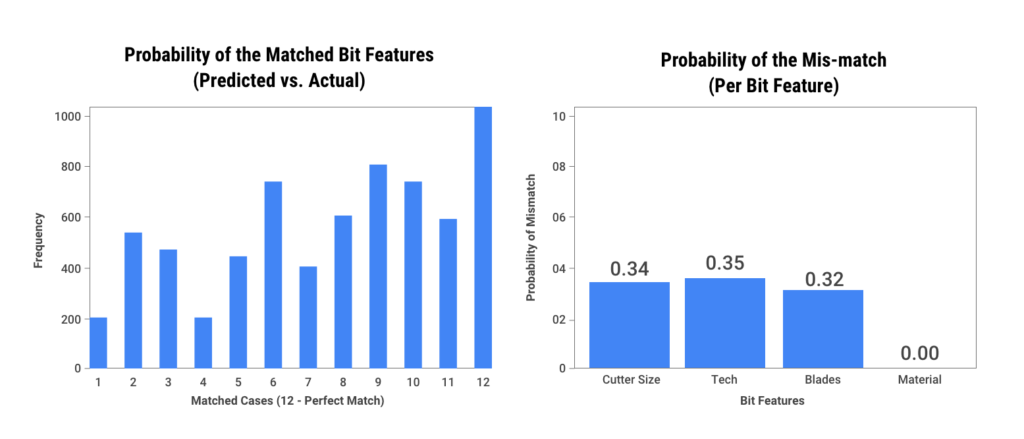
A visual representation of the validation results of the ML-engine predictability for bit design features
Machine Learning is fundamental to understanding large data sets and drawing insights from them. The end objective is to put more control in the hand of the planners and empower them to make data-driven decisions at all times. When continuous learning meets planned outcomes, as in the case of the offshore drilling company, decision-making gets more efficient, and success becomes an everyday possibility.
Digital twins are leading the next generation of performance management systems by providing real-time, end-to-end transparency throughout the supply chain. By replicating the assets and links in a complex supply chain, the offshore drilling company was able to use the digital twin technology to increase the effectiveness of their long-term planning and optimize the configuration of the entire supply chain system.
The next generation of performance management systems provides real-time, end-to-end transparency throughout the supply chain. Companies that leverage digital technology to improve visibility and increase end-to-end transparency have the edge over their competitors in a highly disruptive business environment.
Planning in a Box offers a range of AI and ML solutions that enable you to make data-driven decisions with precision and clarity. To learn how you can build scalable digital capabilities to create better insights from big data, request a free consultation and a workshop.
References: